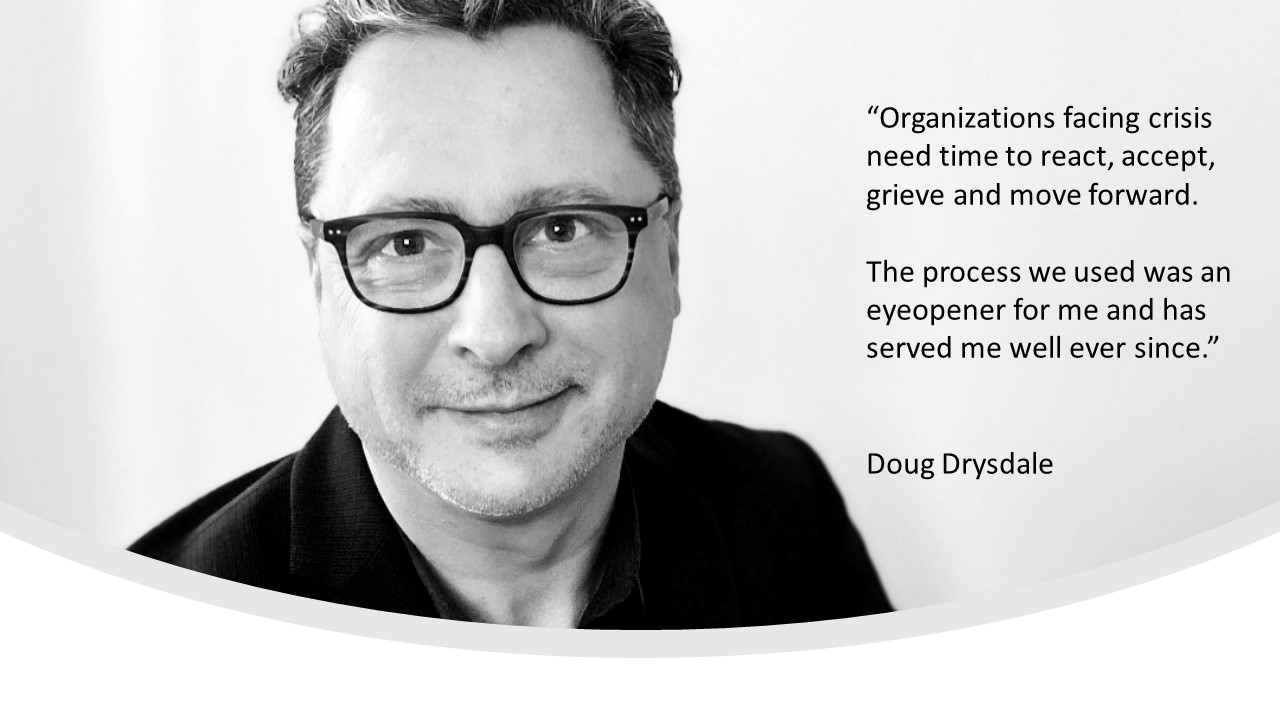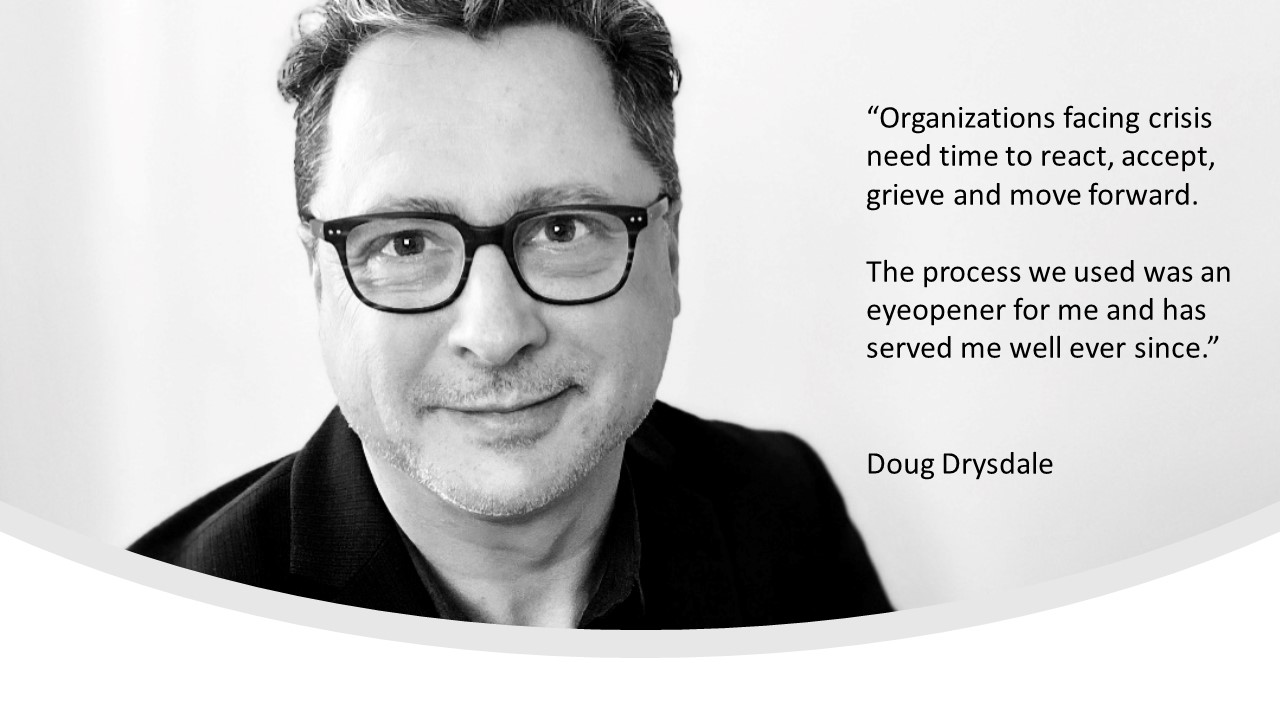
My experience delivering devastating news to my team
June 10, 2020
The current pandemic that we find ourselves in, has us all in some form of crisis management mode. Whether it is managing employee safety, dealing with work-from-home challenges, managing reduced cash flows, furloughs, or layoffs, many of us are juggling issues on multiple fronts.
While the current situation is challenging, it has come at us insidiously, changing our lives week after week, in ways we would never have anticipated. As hard as it is, this insidious, creeping change is nothing like handling an urgent, out-of-the-blue crisis on a scale that immediately threatens business continuity. I recall, a dozen years ago, or so, in my first CEO role, being dealt a mighty blow in just the first couple of weeks of taking the job. What I learned from the management of that crisis has served me well over the years.
Back then, our manufacturing business produced pharmaceutical products for several well-known pharmaceutical marketing companies. One wet, spring day, an important client informed us of some deeply concerning results it had received from ongoing animal safety studies in Europe, for one of their products that we produced.
Newly emerging clinical data indicated that there was potential for the occurrence of teratogenic effects of the drug in pregnant primates. Meaning that the drug had the potential to disturb the development of a fetus, potentially causing major birth defects. Anyone that recalls the worldwide tragedy of the thousands of birth defects caused by thalidomade in the late 50s and 60s will understand that this was potentially devastating news.
As a result of the emerging data, the Occupational Exposure Limit (OEL) of the compound was decreased 50x. Meaning that, in a worst-case scenario, we had potentially been exposing our employees to 50x the amount of drug that was now deemed to be safe. Worse than that, we had a number of pregnant women among our 400+ workforce that had undoubtedly been exposed to the compound.
So there I was, two weeks into my first CEO role and I had the sudden responsibility to inform our employees that they had been exposed to a chemical that could cause birth defects in their unborn babies! Imagine having to do that. Right at that moment I wanted to be anywhere else than at our manufacturing facility, with this solemn task ahead of me.
However, time was of the essence – we had an obligation to get this information to our employees as quickly as we could, in the most comprehensive way possible. Here are the steps we took:
- Preparation – we thoroughly did our homework on the issue
- Communication – we were direct, honest and provided full disclosure
- Reaction – we allowed our employees to fully absorb the information
- Action – we immediately took action to rectify the problem
Preparation
Our preparations included a rapid deep dive into the new clinical data, the design and relevance of the studies, probability of various outcomes, and the detailed facts surrounding the potential exposure of every one of our employees. We had to know all of the available facts, inside out, and fast.
We brought in a crisis management expert, not to do our job for us, but to help us implement best practices and to provide an objective view of the situation. As you can imagine, it was hard to remain objective and not become emotionally weighed down in that situation.
Communication
We then created two presentations for our employees. The first was a direct, honest, full disclosure of the information and the potential risks. No excuses, no softening of the message. We gave it to them straight.
The second presentation was created from the results of an extensive brain-storming session, led by our crisis management expert, where we as a management team, attempted to address every possible question that hearing first presentation might evoke. This was a long and exhaustive exercise, but as we came to learn, critical to the process.
Reaction
We called a company-wide meeting. Typically, as we operated on 3 shifts, we would handle company-wide presentations in two or three gatherings, allowing for the start or end times of those shifts. On this occasion, though, we did not have that luxury and so an all-hands meeting was called. That in itself was unusual and got the rumor mill grinding.
We delivered the first presentation – the bare, direct and shocking facts only – no excuses, no justifications. As you can imagine the reactions were intense, eliciting deep concern and fear among the population. What occurred next, though was truly enlightening to me at the time. Rather than immediately presenting the second, offsetting presentation, we enabled the organization to grieve.
For the next two hours we took all of their questions and projected them on a screen for all to see. We gave no answers, we just kept taking questions until there were no more left. Until everyone, that needed to, had a chance to vent and grieve and make their voice heard. It was a powerful and emotional time.
Only when the questions were spent did we deliver the second presentation. It was long and detailed, and included as much countering and reassuring information that we could provide, based on our extensive research. After this second presentation, we went though every single question – checking with the group that we had answered them all to their satisfaction. Each and every one. Our brainstorming had been effective and the presentation answered 99% of their questions, leaving just a few for us to tackle as a management team.
The entire process was cathartic. I saw emotions flare as the devastating situation was communicated; real-time grieving as questions were thrown out; and a communal sense of relief as we answered each and every one of their questions and concerns, and provided a detailed action plan going forward.
You would expect an event like that to really shake up our community, but quite the opposite. Rather than management providing excuses or justifications, the process enabled our team to grieve and vent. I saw people leaving the session with smiles on their faces – smiles of relief – and many employees came up and shook my hand, thanking our management team for taking care of them.
Those reactions were a huge relief to me and the process cemented a stronger bond with our employees, gaining us trust and credibility from being so direct and thorough. I wouldn’t wish this kind of crisis on any manager, but this powerful and valuable experience has served me well during many other crises since then. Organizations facing crisis need time to react, accept, grieve and move forward. The process we used was an eyeopener for me and has served me well ever since.
Tell me about the crises you have had to face at [email protected]
Read more articles at https://douglasdrysdale.com/
Subscribe here: https://douglasdrysdale.com/subscribe/


